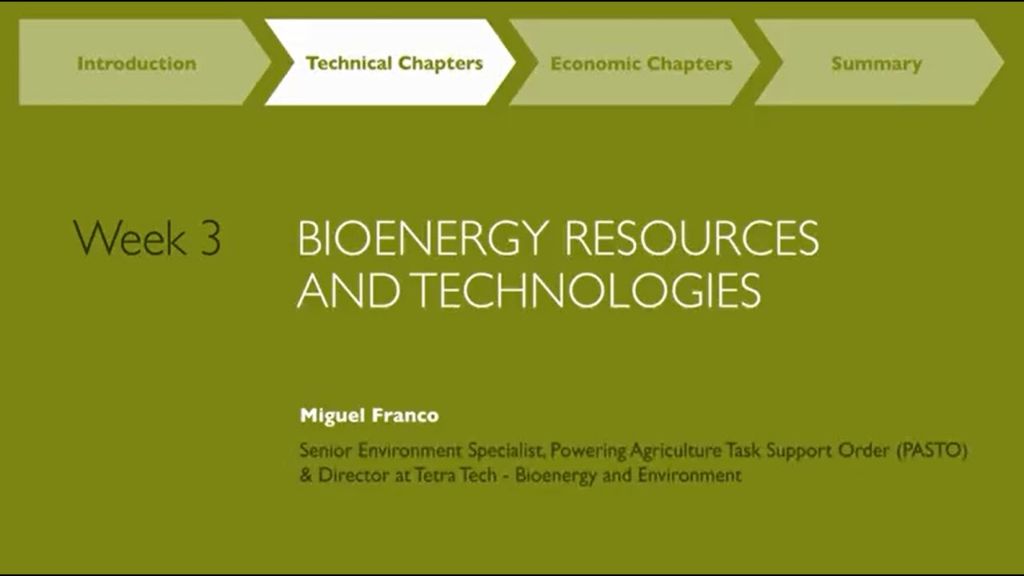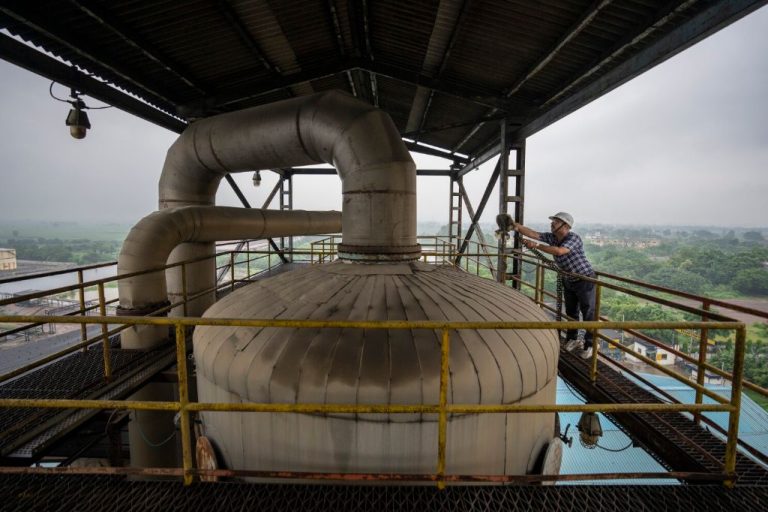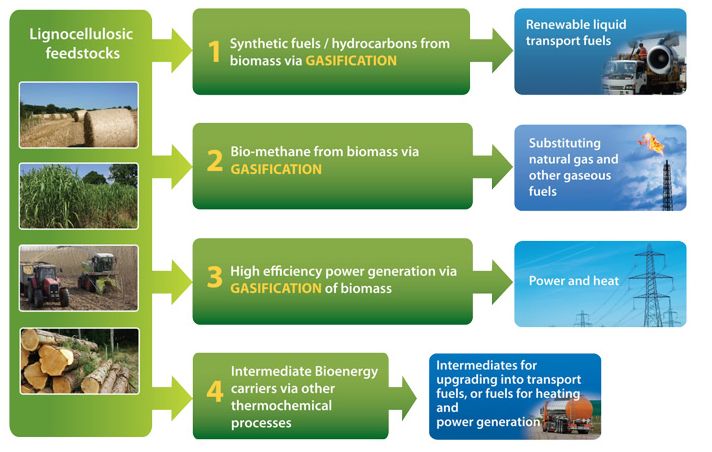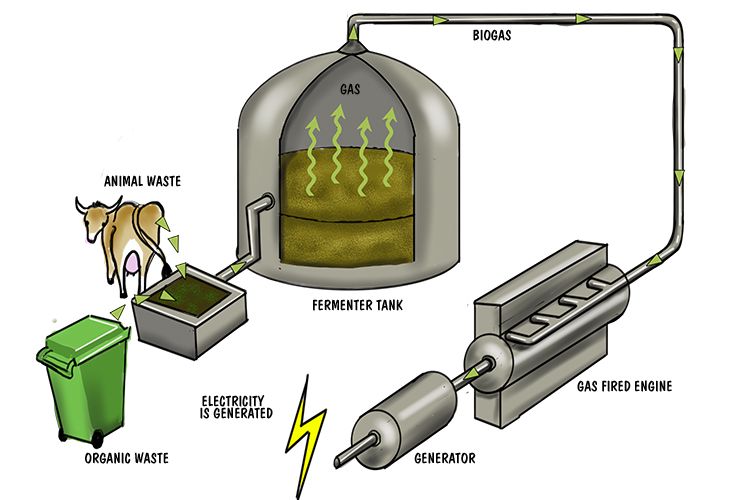What Are The Three Main Bioenergy Technologies?

Bioenergy is renewable energy made from organic matter, which refers to materials that come from plants and animals like wood, agricultural crops or wastes, and municipal solid waste (https://www.energy.gov/eere/bioenergy/bioenergy-basics). It is considered renewable because biomass can regrow over relatively short periods of time compared to the hundreds of millions of years needed for fossil fuels to form (https://www.iea.org/energy-system/renewables/bioenergy).
Bioenergy is important today as a sustainable energy source that can provide heat, electricity, transportation fuels like ethanol and biodiesel, and products like bioplastics. It offers a renewable alternative to fossil fuels and helps reduce greenhouse gas emissions that contribute to climate change. Bioenergy currently makes up around 5% of total global energy use.
Biofuel
Biofuel refers to fuels that are made from biomass, organic materials such as plants or animal waste. The two main types of biofuel are ethanol and biodiesel.
Ethanol is an alcohol-based fuel usually made from corn, sugarcane, or other crops high in starch and sugar. It can replace gasoline in internal combustion engines. The main benefits of ethanol are that it is a renewable fuel source and has lower emissions than gasoline. However, growing crops for ethanol competes with food production and requires significant land and water resources. Feedstocks for Biofuel Production
Biodiesel is made from vegetable oils, animal fats, or recycled cooking oils. It is used as an additive or alternative to petroleum-based diesel fuel. Biodiesel reduces tailpipe emissions and utilizes waste oils that would otherwise be discarded. Challenges include the high cost of virgin vegetable oils for production and cold weather performance issues. Is the biofuel industry approaching a feedstock crunch?
The main feedstocks for biofuel production are corn, sugarcane, soybeans, rapeseed, palm oil, animal fats, and used cooking oils. The choice of feedstock depends on geographic availability, yield, and processing methods. For example, ethanol in the U.S. mainly uses corn while Brazil relies heavily on sugarcane.
Biopower
Biopower is energy derived from the conversion of biomass resources. The two main technologies used for biopower generation are:
Biomass Combustion
Combustion of biomass directly generates heat and electricity by burning organic materials such as wood, agricultural residues, and solid waste. Steam is produced to rotate turbines which generate electricity (1). According to Visualizing Energy, biomass combustion accounted for 90% of global biopower capacity in 2021.
Anaerobic Digestion
Organic material such as manure, food waste, and sewage sludge are broken down by bacteria to produce biogas in an oxygen-free environment. The biogas can then be used to generate electricity. Major feedstocks for anaerobic digestion include waste water, landfill gas, and agricultural residues (2).
Compared to fossil fuels, biopower can reduce greenhouse gas emissions as the carbon released is part of the natural carbon cycle. However, biomass power plants require large amounts of feedstock which can be challenging to procure. There are also concerns around air pollution from the plants (3).
Bioproducts
Bioproducts utilize biomass feedstocks like corn, sugarcane, or cellulosic materials to produce industrial and consumer products that would otherwise be made from petrochemicals. Some of the main bioproduct categories include:
- Bioplastics – Plastics made from renewable plant-based materials rather than fossil fuels. They provide a renewable and biodegradable alternative to traditional plastics.
- Bioasphalt – An asphalt alternative made from non-petroleum renewable resources like plant oils or tree resins. It has similar performance to regular asphalt.
- Bio lubricants – Lubricants derived from vegetable oils like canola or soybean oil. They are rapidly biodegradable and non-toxic.
Some key benefits of bioproducts include:
- Renewable materials – Made from biomass that can be reproduced, unlike finite fossil fuels.
- Lower carbon footprint – Biomass absorbs CO2 as it grows, offsetting emissions during production.
- Biodegradability – Many bioproducts break down naturally, reducing waste and pollution.
- Enhanced sustainability – Derived from plants and agricultural waste products.
However, bioproducts also face some challenges such as:
- Higher costs – Petrochemicals remain cheaper due to the maturity of processes and technologies.
- Performance limitations – Some bioplastics have less strength, durability or heat resistance compared to conventional plastics.
- Scalability – Large scale production capacity is still developing for many bioproducts.
Key Differences
While biofuels, biopower, and bioproducts are all derived from biomass, there are several key differences between these three bioenergy technologies (https://farm-energy.extension.org/what-are-the-differences-between-biofuels-biopower-and-bioproducts/):
Biofuels – Liquid fuels like ethanol and biodiesel used for transportation. Pros are they can displace fossil fuels and be used in conventional vehicles. Cons are high production costs and limited scalability.
Biopower – Electricity generated by burning biomass sources. Pros are it’s a dispatchable and renewable energy source. Cons are it still produces emissions and requires consistent fuel sources.
Bioproducts – Products like plastics, chemicals, etc. derived from biomass. Pros are they reduce reliance on fossil fuels. Cons are the high costs and immature technologies.
While all three offer environmental benefits over fossil fuels, biopower and bioproducts are generally more scalable and cost-effective currently than liquid biofuels. However, continued research aims to improve the viability of transportation biofuels.
Environmental Impact
Bioenergy technologies can have both positive and negative impacts on the environment. On the positive side, bioenergy can reduce carbon emissions compared to fossil fuels. However, the net carbon impact depends on the full lifecycle emissions from feedstock production, processing, and combustion. Land use changes associated with bioenergy feedstock production can also release carbon from soils and vegetation.
One study found that removing logging residues for bioenergy reduces the carbon stored in forest soils (Schlamadinger et al., 1995). However, combining bioenergy with carbon capture and storage (BECCS) can enable net negative emissions by permanently storing the captured CO2 underground (IEA, 2023). Analyses of U.S. biofuel production found a wide range of net emission impacts depending on factors like land use change and feedstock (DeCicco et al., 2016).
Overall, bioenergy’s climate impacts depend greatly on the specific technologies and practices used. Sustainable practices like using waste residues, perennial crops, and BECCS can maximize bioenergy’s carbon reduction benefits.
Economic Impact
The growth of the bioenergy industry has created numerous jobs and investment opportunities. According to the U.S. Department of Energy, bioenergy employs over 155,000 Americans across diverse professions including farming, engineering, microbiology, and more (https://www.energy.gov/energysaver/explore-bioenergy-careers). Jobs in renewable energy, including bioenergy, are expected to continue growing as investment increases. Between January 2021 and March 2023 alone, over 21,000 jobs were added in power generation from renewable sources (https://www.whitehouse.gov/briefing-room/blog/2023/10/23/bidenomics-in-action-clean-energy-jobs-and-investments-taking-hold-across-america/). Major investments in bioenergy technologies will be required to meet growing energy demands sustainably, suggesting strong continued growth in employment and investment in this sector.
Future Outlook
The future for bioenergy looks bright, with several key trends emerging. According to the International Energy Agency, global bioenergy supply is projected to reach 99 EJ by 2026, up from 89 EJ in 2021. This growth will be fueled by increased use of advanced biofuels and feedstocks, which are expected to make up 90% of supply by 2026, versus only 45% in 2021.
Key innovations in bioenergy production are enabling this growth. For example, advanced biofuels produced from wastes and residues are becoming more cost-competitive. Emerging technologies like pyrolysis and gasification are also boosting efficiency in biopower and biofuel production. Additionally, new biorefinery concepts are allowing for more integrated production of biofuels, biopower, and bioproducts from biomass feedstocks.
Policy support remains crucial for realizing bioenergy’s potential. Many countries now include bioenergy in their renewable energy and climate plans. For example, the EU aims to increase the share of renewable energy in transport to 13% by 2030, up from 8.9% in 2020, with advanced biofuels expected to make up most of this increase. Meanwhile, the US recently passed new tax credits for sustainable aviation fuels made from biomass, providing incentives for growth in this emerging market segment.
Key Takeaways
The three main bioenergy technologies are biofuel, biopower, and bioproducts. Biofuels like ethanol and biodiesel provide renewable alternatives to fossil fuel-based transportation. Biopower generates electricity from biomass sources like wood, agricultural residues, and municipal solid waste. Bioproducts use biomass feedstocks to produce chemicals, materials, and other products that would otherwise rely on fossil fuels.
Bioenergy is important for transitioning to a more sustainable energy system and reducing dependence on fossil fuels. Bioenergy can provide low-carbon energy across sectors like transportation, electricity, industry, and buildings. The diversity of feedstocks and technologies allows bioenergy to be produced locally across the globe. With proper sustainability practices, bioenergy can provide environmental benefits like greenhouse gas reductions, improved waste management, and preservation of natural ecosystems. The growth of the bioeconomy provides economic opportunities in both rural and urban areas.
In summary, bioenergy’s versatility, renewability and potential sustainability make it a crucial part of strategies to mitigate climate change, improve energy security, foster rural development and reduce environmental impact. With continued innovation and responsible practices, bioenergy can play a major role in a clean and sustainable energy future.
Further Reading
For those interested in learning more about the different bioenergy technologies and their applications, here are some recommended additional resources:
The U.S. Department of Energy’s Bioenergy Technologies Office provides a comprehensive overview of the major bioenergy basics, including details on biofuels, biopower, and bioproducts.
The National Renewable Energy Laboratory’s biomass research page has more technical details on biomass energy resources and conversion processes.
This Just Energy blog post offers a helpful explainer on key terminology like bioenergy, biofuels, and biomass and how they might contribute to renewable energy goals.
For those looking for more academic resources, scholarly articles on bioenergy technologies can be found in journals such as Bioresource Technology, Energy Policy, and Renewable & Sustainable Energy Reviews.





